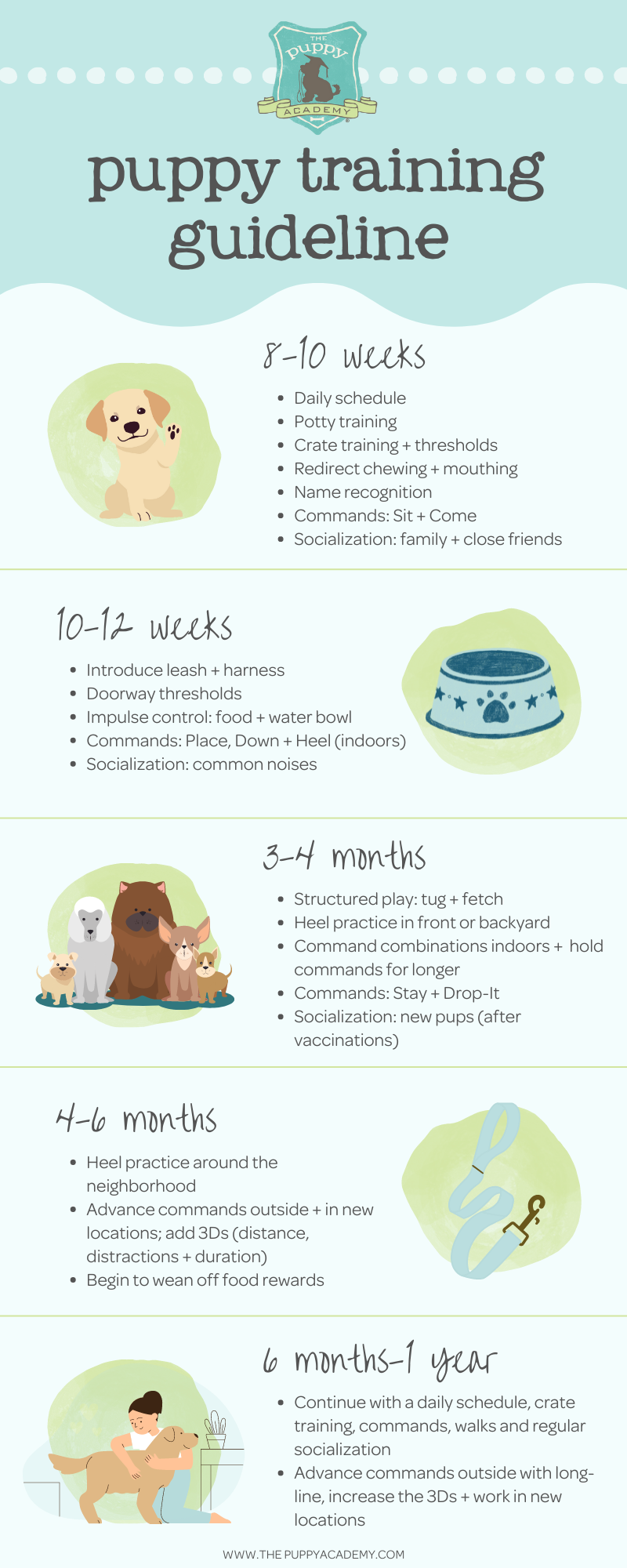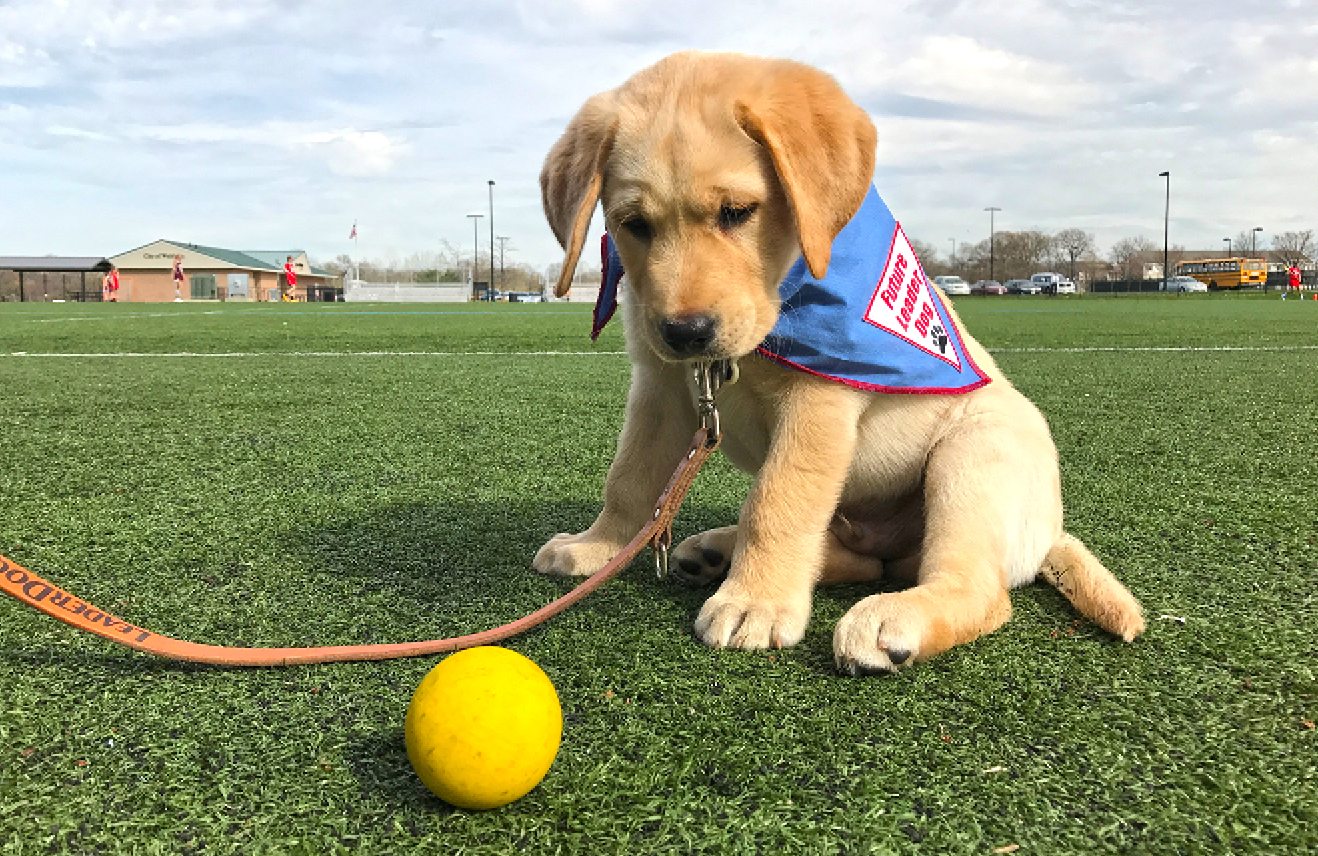Leading Puppy Training Techniques to Make Sure a Well-Behaved Animal
Efficient young puppy training is important for cultivating a mannerly buddy, and different methods can substantially affect a canine's advancement. As we explore these methods further, it becomes clear that the success of puppy training hinges on a combination of methods that can transform your pet's habits in amazing means.
Favorable Reinforcement Methods
Utilizing positive reinforcement techniques is necessary for effective young puppy training, as it motivates desired behaviors with incentives as opposed to penalty. This technique profits from the all-natural knowing processes of pet dogs, strengthening etiquette by supplying prompt and substantial rewards, such as deals with, praise, or playtime. By associating positive outcomes with certain activities, pups are most likely to repeat those behaviors in the future.
Incentives must be provided quickly after the preferred habits takes place to produce a clear connection in the puppy's mind. Furthermore, differing the kinds of benefits can keep a pup's passion and inspiration throughout the training process.

Uniformity in Training Commands
Preserving consistency in training commands is crucial for reinforcing the lessons found out via favorable support strategies. Pet dogs grow on regular and predictability, so making use of the very same verbal commands and hand signals for details habits is essential. This uniformity aids puppies comprehend what is expected of them, decreasing confusion and irritation for both the trainer and the animal.

Timing likewise plays a significant role in uniformity. Commands ought to be provided immediately during training sessions and followed right away by positive reinforcement, such as deals with or praise. This prompt feedback helps strengthen the organization between the command and the desired behavior.
Including consistency right into training sessions will create a secure learning setting, promoting quicker mastery of commands. Ultimately, a well-structured technique fosters a strong bond in between the puppy and its proprietor, resulting in an extra mannerly and obedient family pet.
Socializing With Other Pet Dogs
Socialization with other pets is vital for a young puppy's development, as it helps them find out ideal behaviors and communication abilities in diverse social contexts. Very early interactions with different animals can substantially affect a pup's character and versatility in different situations. When young puppies are subjected to a range of animals, they end up being much more confident and much less afraid, which can avoid potential behavior issues later on in life.

Moreover, observing body language throughout interactions is important. Instruct your puppy to identify signals from various other pet dogs, such as indicators of playfulness or pain, promoting mutual respect and understanding. Normal socializing not only boosts your puppy's social abilities but likewise adds to their total wellness, producing a more unified living atmosphere. Finally, focusing on communications with various other pet dogs will certainly produce a socially adept and well-rounded pet dog.
Pet Crate Training Benefits
Recognizing the various advantages of pet crate training can significantly boost both the pup's and proprietor's experience. Crate training offers a safe and secure and risk-free environment for pups, guaranteeing they really feel safeguarded when left alone. This complacency can dramatically that site decrease anxiety and stress and anxiety degrees for both the owner and the pet.
Additionally, crates act as a useful housebreaking device. Puppies naturally prevent soiling their resting area, thereby motivating them to hold their bladder until they are let outdoors. This instinct can accelerate the housebreaking process, promoting great habits beforehand.
When not being watched,Crate training also helps in handling a pup's actions - puppy training. By giving a designated area, owners can prevent devastating actions, such as eating on furnishings or getting involved in unsafe substances. Crates can be useful during traveling, providing a familiar area that can aid soothe a young puppy in new environments.
Last but not least, establishing a pet crate routine encourages independence, permitting young puppies to learn just how to be alone without worry. On the whole, cage training is an effective approach for promoting self-control, harmony, and safety and security, bring about a well-adjusted, well-behaved family pet.
Leash Training Basics
Leash training is a basic element of accountable pet ownership that ensures a enjoyable and secure walking experience for both the puppy and its owner. Correct chain training starts early, preferably during the puppy's socializing period. When out in public., this training helps establish great habits and promotes favorable actions.
To begin, select a comfy collar or harness that fits your pup well. Affix a tough chain, guaranteeing it is not too long, as this can result in pulling and unpredictable behavior. Beginning in a quiet atmosphere to minimize disturbances and progressively introduce your young puppy to new surroundings.
Use favorable reinforcement techniques, such as deals with and appreciation, to motivate your young puppy to walk beside you. If your puppy draws, stop walking and wait for them to return to your side before proceeding.
Additionally, include brief training sessions with fun interruptions to build your puppy's focus. With dedication and perseverance, chain training will result in an accommodating friend, making walks pleasurable for both the owner and the pup.
Final Thought
In final thought, employing efficient pup training techniques is vital for developing a well-behaved pet dog. On the whole, these methods collectively advertise an unified relationship between pups and their discover here proprietors.
As we discover these methods even more, it comes to be clear that the success of puppy training hinges on a mix of approaches that can transform your animal's habits in exceptional ways.
Making use of favorable reinforcement techniques is essential for effective puppy training, as it motivates preferred behaviors with incentives rather than punishment.Crate training also aids in handling a young puppy's actions when without supervision.Leash training is a basic facet of liable pet ownership that ensures a satisfying and risk-free strolling experience for both the try here pup and its proprietor.In verdict, using reliable young puppy training strategies is vital for creating a mannerly family pet.